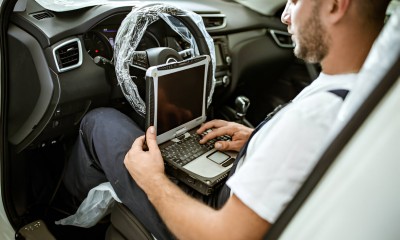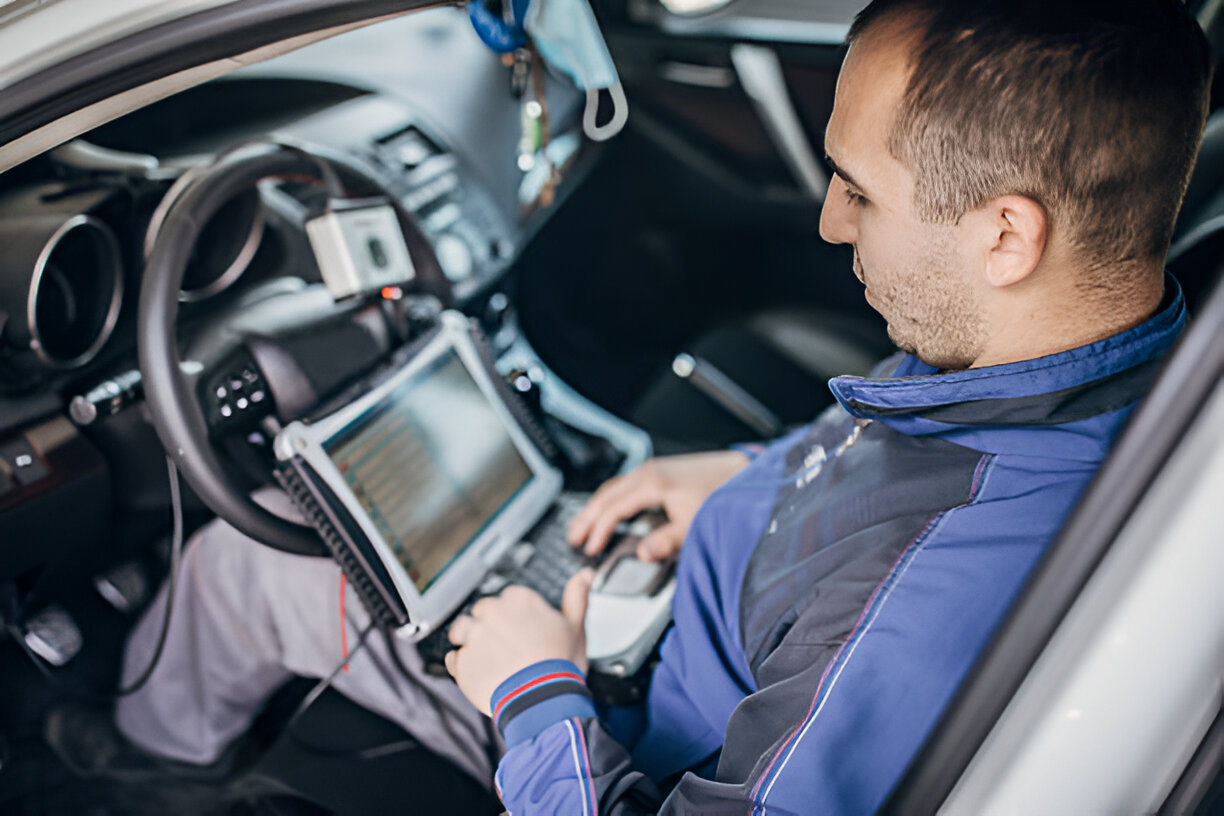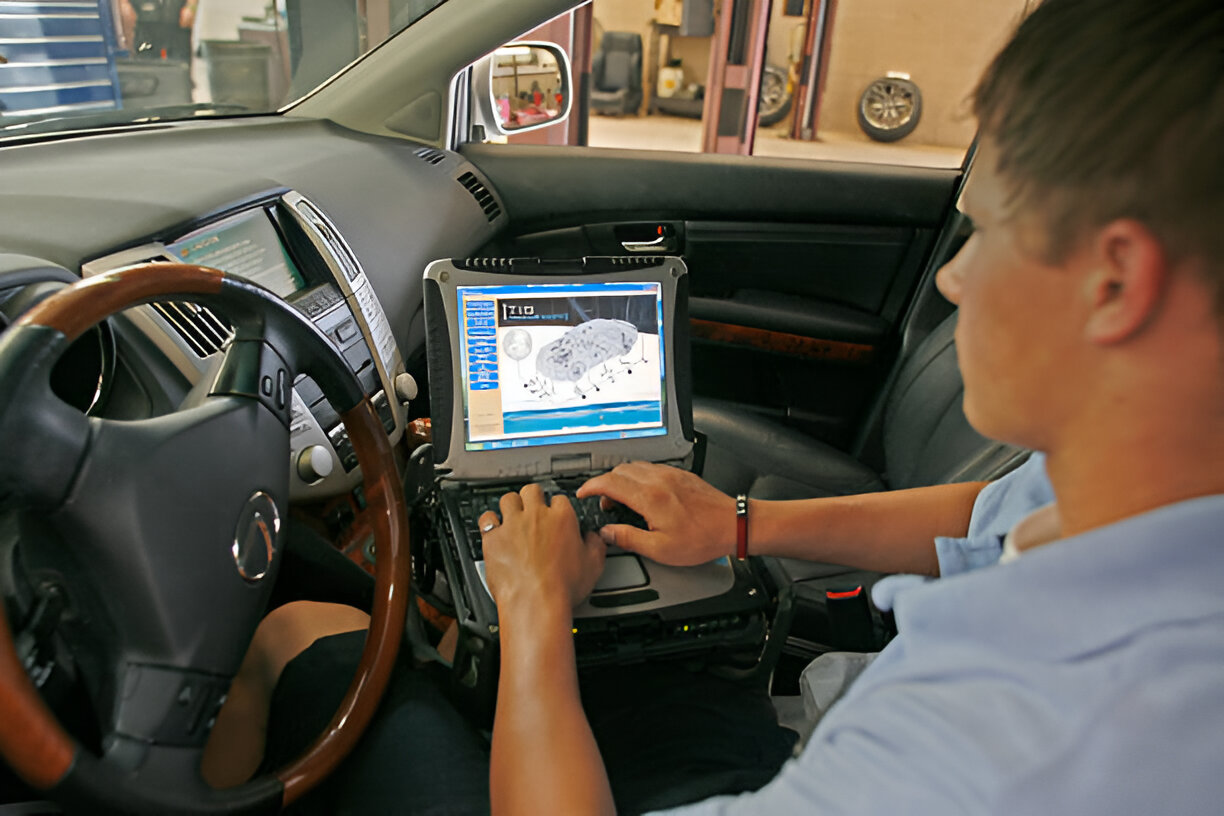The Difference Between OBD, Bench, and BDM Tuning: Explained for Car Owners

For a car enthusiast, the world of engine performance can seem like a complex maze of technical terms. You hear words like chiptuning files, ECU remapping, and hp tuning, but then you run into even more specific jargon: OBD, Bench, and BDM tuning. What are these methods, and why does a professional tuner choose one over the other?
This comprehensive guide is designed to demystify these tuning processes for you, the car owner. We'll break down each method, explain its purpose, and show you why the most crucial decision you'll make isn't about the method itself, but about choosing a professional and trustworthy chiptuning file service like hp-chiptuningfiles.com to handle the tune. By the end of this article, you'll have the knowledge to have an informed conversation with any tuner and a clear understanding of what happens when you decide to get a performance upgrade.
Chapter 1: The Engine’s Brain and the Essence of a Tuning File
To understand the difference between OBD, Bench, and BDM, you first need to grasp the basics of what they're trying to access. At the heart of every modern vehicle is the Engine Control Unit, or ECU. This is a powerful, miniature computer that acts as the "brain" of your engine. It manages dozens of critical functions, from fuel injection and ignition timing to turbo boost pressure and emissions control. The ECU's instructions are contained within its software—a digital map that dictates how the engine behaves in every possible driving scenario.
Vehicle manufacturers program their ECUs with conservative settings. This is done to accommodate a wide range of global variables, including different fuel qualities, extreme climates, and varying emissions regulations. This conservative programming, while safe and reliable, often means that your engine isn't operating at its full potential.

This is where a tuning file comes in. It is a professionally modified version of your car's original ECU software. An expert tuner takes the original data, optimizes key parameters to unlock more power, and then writes this new file back to your ECU. This process, known as ecu tuning files or ecu remapping files, can lead to significant gains in both horsepower and torque, and in many cases, can even improve fuel efficiency.
So, how do you get this new hp tuning files into your car's ECU? The method depends entirely on your vehicle's make, model, and year, and the level of security the manufacturer has built into the ECU. The three primary methods are OBD, Bench, and BDM. A high-quality chiptuning file service like ours has the expertise and the chiptuning tools to handle all three, ensuring your vehicle gets the perfect tune no matter its complexity.
Chapter 2: OBD Tuning – The Modern Standard for Speed and Convenience
OBD (On-Board Diagnostics) tuning is, without a doubt, the most common and least invasive method of remapping an ECU. It has revolutionized the automotive tuning industry by making the process faster and more accessible than ever before. For a car owner, the main draw of OBD tuning is its simplicity and speed.
What is OBD Tuning?
The OBD port is a standardized connector found on all vehicles manufactured after 2000 (and many before). It’s the same port your mechanic plugs into to read diagnostic trouble codes (DTCs) and identify issues. For tuning, this port serves as a direct communication link to the ECU, allowing a professional to read the original software and write a new, optimized file.
The entire process is performed without ever opening the hood or touching the ECU itself. This is why it’s often referred to as a "non-invasive" method. The tuner simply connects a specialized programming tool to the OBD port, and the rest is handled digitally. For most modern cars, a standard tuning file can be written back into the ECU in just a few minutes. This is a major selling point for our tuning file service, as it allows us to provide custom, dyno tested ecu tuning files with incredible speed and efficiency.
The Process Step-by-Step
A typical OBD tune follows a straightforward procedure:
-
Diagnosis: A professional tuner performs a full diagnostic scan of your vehicle to ensure there are no existing fault codes or mechanical issues. This is a critical first step for any tune to ensure the engine is in a healthy state.
-
Reading the Original File: The tuner connects a chiptuning tools to your car's OBD port. Using the tool's software, they read the factory settings from the ECU, creating a full backup of the original chip tuning file. This original file is a crucial safeguard, allowing the car to be reverted to its stock state at any time.
-
File Optimization: The original file is uploaded to a tuning file service like hp-chiptuningfiles.com. Our team of WinOLS specialists and experienced tuners analyzes the data and creates a bespoke custom tuning files for your vehicle. Whether you want more power (performance tuning files), better fuel economy (eco tuning), or a custom chiptuning solution, our experts will modify the file with precision.
-
Writing the New File: Once the new, optimized file is ready, the tuner downloads it and writes it back to your car's ECU via the same OBD port. This is often the fastest part of the process.
This seamless process allows us to deliver tuning files service that is both quick and reliable. For many drivers, this is the only method they'll ever need.
Benefits and Limitations of OBD Tuning
Benefits:
-
Convenience: The ECU stays in the car, making the process quick and easy. This is the ultimate "plug-and-play" method in the tuning world.
-
Non-Invasive: There's no risk of physical damage to the ECU, as it's never removed or opened.
-
Speed: The entire read-write process can be completed very quickly, minimizing the time your vehicle is in the workshop.
-
Widely Compatible: This method works for a vast majority of vehicles on the road, making it the go-to solution for everyday cars and common tuning requests.
Limitations:
-
Security Blocks: Car manufacturers are constantly improving their security. Many modern ECUs, especially those in high-performance or luxury vehicles, have anti-tuning protections that block OBD access.
-
Limited Access: In some cases, OBD tuning tools can only read a partial copy of the ECU's software. This is sufficient for basic stage 1 tuning files but may be restrictive for more advanced modifications.
-
Power Issues: A drop in battery voltage during the read-write process can corrupt the file and "brick" the ECU. While rare, this is a risk. This is why a professional tuner will always use a battery stabilizer during the procedure.
For a fast, safe, and effective tune on an unencrypted ECU, OBD tuning is the perfect choice. Our hp chiptuning files are optimized for this method, providing a seamless experience for both tuners and car owners.
Chapter 3: Bench Tuning – Unlocking Deeper Access and Full Control
When a vehicle's ECU is too secure for OBD tuning, a professional tuner turns to Bench tuning. As the name implies, this method involves physically removing the ECU from the car and placing it on a workbench to establish a direct connection. This bypasses the security measures that a manufacturer has put in place, providing the tuner with a much deeper level of access. For many modern vehicles, performance tuning files are only achievable through this method.
 What is Bench Tuning?
What is Bench Tuning?
Bench tuning, also known as Bench Mode or Service Mode, is a method where the ECU is connected directly to a tuning tool via its wiring harness pins. Unlike BDM (which we’ll get to later), the ECU's casing remains sealed and is not opened. This makes it a powerful, yet less invasive, alternative to OBD when security is a concern. The process requires a chiptuning file service with specific expertise and specialized tools that can interface with the various types of ECU connectors. Our team at hp-chiptuningfiles.com has extensive experience working with a wide range of ECUs, including complex systems from Bosch, Siemens, Continental, and more.
The Process of a Bench Tune
The Bench tuning process is more labor-intensive than OBD, but it is the most reliable way to ensure a full and complete read of the ECU's data.
-
ECU Removal: The tuner first locates and carefully removes the ECU from the vehicle. This step can range from a quick and simple process to a time-consuming task, depending on the car's design.
-
Setup on the Bench: The ECU is placed on a dedicated bench. The tuner connects the ECU's main connectors to the tuning tool using specialized "pinout" cables. These cables provide a direct and stable communication link to the processor and memory.
-
Full Backup Read: The tuning tool is used to read the entire software, including the program, flash memory, and EEPROM. This creates a "full backup" of the original ECU, which is crucial for safety and recovery. This level of access is often impossible with OBD tuning and is a key benefit of the Bench method.
-
File Optimization & Writing: The full backup is uploaded to our chiptuning fileservice. Our expert team modifies the ecu file service to create a new tuned file that meets your specific requirements. The new file is then written back to the ECU via the same Bench connection.
-
Reinstallation: The ECU is carefully reinstalled in the car, and the vehicle is tested to ensure all systems are functioning correctly.
When Professionals Choose the Bench Method
Bench tuning is the preferred method for a variety of reasons, especially when dealing with newer vehicles and specific tuning goals.
-
Bypassing Anti-Tuning Security: Many modern ECUs use TPROT (Tuning Protection) to prevent read/write operations via the OBD port. Bench mode provides a workaround by communicating directly with the ECU’s internal components.
-
Comprehensive Backups: The ability to create a "full backup" is a major advantage. If something goes wrong during the tuning process, the full original software can be restored, which is an invaluable safety measure.
-
Access to All Maps: Some vehicle systems, such as gearboxes, can have their own control units (TCU). Bench tuning often allows access to these, enabling a gearbox tuning files modification for faster shifts and better response.
-
Stability: Unlike OBD tuning, which can be sensitive to battery voltage fluctuations, a Bench setup provides a stable, external power supply, minimizing the risk of a corrupted file.
While it requires more work, Bench tuning is the best way to get a complete and reliable tune on many of today's vehicles. Our expertise in this area is why so many professional workshops choose our fileservice chiptuning. We provide them with the perfect tuning files to meet their clients' needs.
Chapter 4: BDM Tuning – The Last Resort for Ultimate Access
BDM (Background Debug Mode) tuning is the most advanced, invasive, and intricate method of ECU remapping. It is not the first choice for a tuner, but it is often the only option when all other methods fail. For a car owner, this is a procedure you should only entrust to the most experienced and reputable chiptuning professional.
What is BDM Tuning?
BDM tuning involves a direct physical connection to the ECU's circuit board. The tuner must open the ECU’s casing and connect a special tool with probes to specific "debug" or "service" pads on the board itself. These points are designed by the manufacturer for testing and debugging, and they provide the ultimate level of access to the ECU's memory and processor. The term BDM itself refers to a specific protocol used to communicate with certain microcontrollers.
Over the years, manufacturers have moved away from this method in favor of more integrated solutions, but for many older ECUs, especially those with certain Bosch processors, BDM is the only way to read and write a full chip tuning file. It is also the go-to method for recovering a "bricked" ECU—one that has been rendered non-functional by a failed OBD or Bench flash.
The BDM Process: A Delicate Operation
The BDM process is a testament to a tuner's skill and precision. It requires not only technical knowledge but also an extremely steady hand.
-
ECU Removal and Opening: The ECU is carefully removed from the vehicle. The tuner must then meticulously open the sealed casing. This is a critical step, as improper opening can cause irreparable damage.
-
Mounting on a Frame: The open ECU is placed in a specialized BDM frame. This frame holds the ECU in place and provides a stable platform for the probes. The probes themselves are precisely positioned to make contact with the tiny BDM pads on the circuit board.
-
Establishing the Connection: Once the probes are in place, the tuner can establish a direct, uninterrupted connection to the ECU. This bypasses all security, including anti-tuning protocols and bootloader passwords.
-
Full Read and Recovery: With the connection established, the tuner can perform a full read of the ECU's memory. This is the only method that can reliably recover a "bricked" ECU by rewriting the core software.
-
File Creation and Writing: The original file is then sent to a chiptuning file specialist like hp-chiptuningfiles.com. The new file service ecu is carefully crafted, taking into account the deep level of access that BDM provides. The new file is then written back to the ECU.
-
Re-sealing and Reinstallation: The ECU is then carefully re-sealed, a crucial step to protect the unit from moisture and dust, and reinstalled in the vehicle.
When BDM is the Only Option
BDM tuning is the final frontier in ECU remapping. It is used in very specific, high-risk scenarios:
-
The ECU is Blocked: When a manufacturer's security is so advanced that it prevents both OBD and Bench access.
-
ECU Recovery: If a previous tuning attempt failed and "bricked" the ECU, BDM is often the only way to revive it.
-
Legacy Systems: For certain older vehicles, BDM is the only protocol available to communicate with the ECU.
While it is the most dangerous method for an amateur, a true professional sees BDM as a tool for ultimate control and as a crucial lifeline for a damaged ECU. Our expertise and high-quality tuning file database allow us to provide safe and effective solutions for even the most challenging projects. Our hp-chiptuningfiles are developed with the utmost care, ensuring the best possible outcome.
Chapter 5: How to Choose a Chiptuning Method – The Tuner’s Perspective
For a car owner, understanding the differences between OBD, Bench, and BDM is incredibly valuable. It helps you appreciate the complexity of the process and the expertise required. However, you don't actually need to choose the method yourself. That's the professional tuner's job.
When you bring your vehicle to a reputable tuner, they will assess your vehicle and its ECU and determine the most appropriate and safest method. The decision-making process is a logical one, often following this order:
-
Is OBD possible? If the vehicle's ECU is known to be open and unencrypted, the tuner will use the OBD method for its speed and convenience.
-
Is Bench required? If the OBD port is locked or a full backup is needed, the tuner will move on to the Bench method, which provides a deeper level of access without the need to open the ECU.
-
Is BDM necessary? Only when all other methods fail or the ECU needs recovery will a tuner resort to the BDM method.
The most important takeaway for you is this: the quality of the tune is not determined by the method used, but by the expertise of the people performing the tune and creating the chiptuning files.
At hp-chiptuningfiles.com, we partner with professional tuners who are experts in their field. We provide them with dyno-tested tuning files, so they can focus on what they do best: applying the perfect tune to your car.
Conclusion: Trusting the Experts for a Perfect Tune
Whether your car is tuned via the non-invasive OBD method, the highly accessible Bench method, or the intricate BDM process, the final result is the same: a powerful, reliable, and more efficient engine. The key to a successful tune is a seamless partnership between a skilled professional who handles the hardware and a top-tier chiptuning file service that provides the optimized software.
Our hp chip tuning files are developed by WinOLS specialists with over 17 years of experience. We provide custom dyno files that are meticulously crafted to deliver a safe and powerful upgrade, whether it's a stage 1 file for daily driving or a more aggressive tune. We take pride in our ability to deliver best tuning file service that guarantees a noticeable improvement in your car's performance.
So, when you're ready to unlock your car's true potential, don't worry about the technical jargon. Instead, focus on finding a reputable tuner who trusts a professional chiptuning fileservice to get the job done right. With our help, you can have confidence that your car is in the best hands, receiving a trusted safe ecu tuning solutions.
Other news and updates

Read more OBD Breakthrough: Tuning Support for the Continental ASG1 ECU in Audi e-tron & Porsche Taycan
The Continental ASG1 ECU used in the Audi e-tron and Porsche Taycan is now fully supported for OBD read/write. This breakthrough allows safe tuning of torque limits, current maps, thermal strategies and pedal response, enabling measurable performance gains whi...
Read more

Read more Stage 1, Stage 2, and Stage 3 Tuning: Which One Is Right for You? | HP Chiptuning Files Europe & UK
Discover the differences between Stage 1, Stage 2, and Stage 3 tuning. Learn which remap is best for your car, driving style, and budget at hp-chiptuningfiles.com.
Read more

Read more Mercedes-AMG G63 2025: ECU Remap & Performance Boost
Hey, we are HP Chiptuningfiles – Europe’s leading ECU tuning file service provider. We deliver custom, dyno-tested tuning files for diesel, petrol & hybrid engines, trusted by 4,000+ clients worldwide. The 2025 Mercedes-AMG G63 combines iconic G-Class ruggedne...
Read more